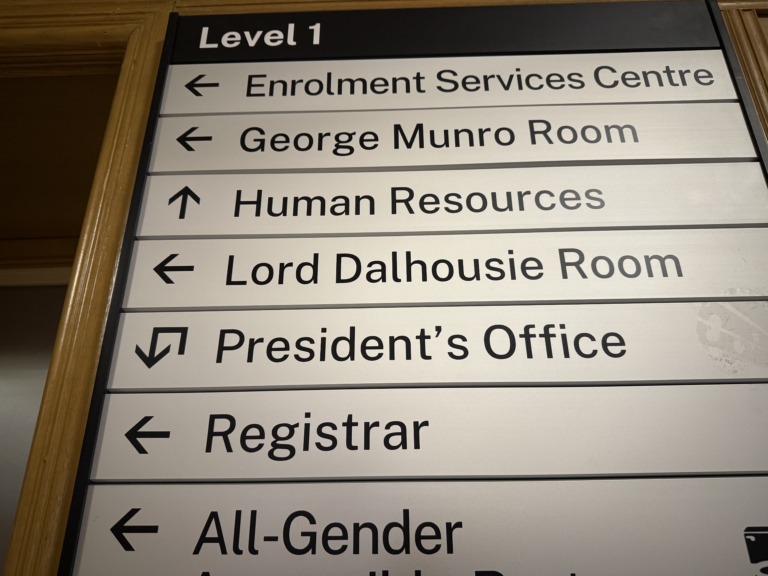
By Kaley Kennedy, Opinions Editor
Last week, Dalhousie Security sent students a security bulletin describing a sexual assault against two female students that happened on Feb. 6 in the south end of Halifax. While receiving the odd e-mail reminder to stay alert when walking alone at night, or to make sure I lock my door is somewhat helpful, the stranger-danger approach to campus safety still misses the mark.
Security bulletins are important. They provide important information for students that will help them be aware of some of the risks. These bulletins also have a history of coming out of grassroots initiatives by communities to report events that aren’t reported by the media. In the United States, universities are mandated to report crime statistics on campus to staff and students because of public pressure after a case where a woman was tortured, raped and murdered. The university failed to disclose over 30 other attacks that in the three years preceding this attack.
But security bulletins can’t do all the work, and neither can the criminal justice system.
According to Statistics Canada, 88 per cent of sexual assaults are not reported to police. Annually, about 31,000 sexual assaults occur in Nova Scotia. But in 2007, just over 700 were reported to police.
Why are so many sexual assaults unreported? There are several reasons. According to Statistics Canada, reasons range from a desire for privacy, to fear of the perpetrator, to not knowing if what happened was a crime or if they have adequate evidence, to not trusting the police and the courts.
While it would be nice to believe that we live in a world where sexual assault survivors wouldn’t face questions such as “What were you wearing?” or “How much did you have to drink?” or “But, you went home with the accused willingly, didn’t you?” the reality is that these questions are common in a court of law, where the survivor is also under a microscope.
What would it look like if there were a security bulletin for every sexual assault that happened on campus? The picture would be a lot harder to handle. There would be more than just “victims” and “assailants” – there would be friends, classmates, and co-workers on both sides of the line. In two-thirds of the reported sexual assaults in Nova Scotia in 2007 the sexual assault survivor knew the perpetrator.
But there aren’t Security Bulletins that say: “Sorry, you’re still going to have to sit next to your floormate who wouldn’t leave your room unless you went down on him.”
There aren’t Security Bulletins that say: “You were drunk, but you still have the right to feel wronged.”
There aren’t Security Bulletins that say: “Sexual assault is more than a crime; it’s a breech of trust. Educate yourself, protect others.”
Security bulletins like that don’t exist because we don’t always name sexual assault for what it is. Sometimes a response to feeling shitty the morning after is less “You were assaulted and this wasn’t your fault,” and more “Let’s dye your hair – that will make you feel better.” Sometimes the story itself is less “I was raped,” and more “I said no at first, but he was stubborn. At least he wore a condom.”
Campus culture, and the world at large, has trouble naming sexual violence. We live in a world of dichotomies: sluts and virgins, geeks and players, partner material and one-night stands. Sometimes sexual assault resides in the gray area: an area people have trouble naming, even recognizing.
And while the National Post will argue, “Women’s Studies courses have taught that all women – or nearlyall (sic) – are victims and nearly all men are victimizers,” I’m not saying either.
Survivors and perpetrators of sexual assault are people. They are people we know, and we need to be more responsible for that. We know the symptoms of date rape drugs, but do you have someone to call if you need to talk? We know how to call 911, but do we know what we’d do if a friend assaulted someone else? We can understand the weight of the word “no”, but are we willing to make communication and consent a cornerstone of our sex lives? We understand that walking someone home might help him or her feel safe, but do we know what to do if the danger is at home?
Maybe instead of our view of campus safety relying on security bulletins and police officers, what if it looked more like looking out for each other?






